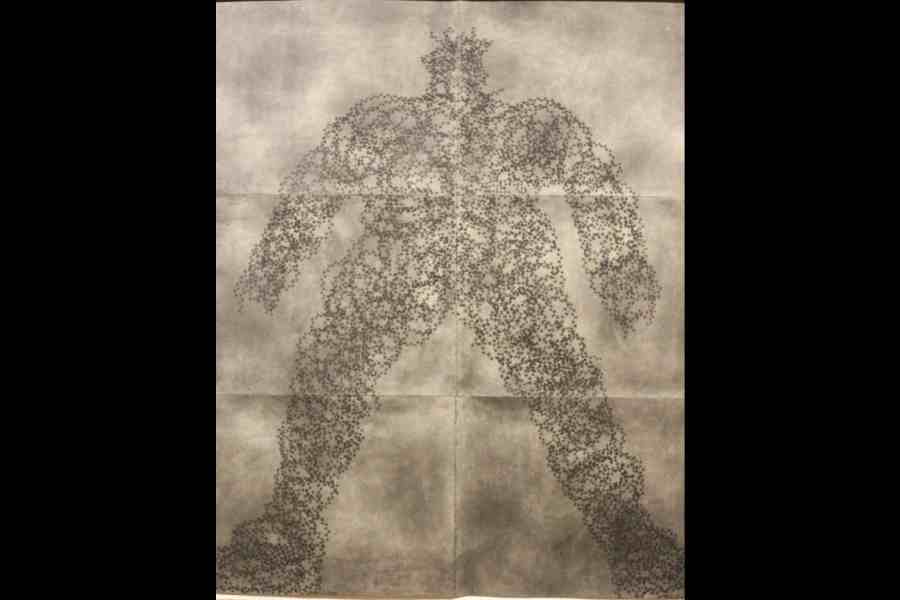Debnath Basu’s concerns as an artist are focused on downtrodden and marginalised people and the society that is responsible for their disenfranchisement. His art reveals a world where the normal order of things goes for a toss. Some of his most arresting works at the exhibition, In Waiting…, at the Birla Academy of Art and Culture are iconic images of the invisibilised people who live on the margins of society, people who are beyond the pale, those whose presence we refuse to acknowledge.
One of these is the towering vertical image of one of the hapless characters from Nabarun Bhattacharya’s cult novel, Kangal Malsat, who wants to decimate a hostile world as he urinates while doing a balancing act on two piles of khuris or earthenware tea cups. The second such image is of a character borrowed from Saadat Hasan Manto’s short story, “Toba Tek Singh”, about the inmates of a Lahore asylum. It is a satire that is also a powerful indictment of the 1947 Partition that played havoc with the lives of the peoples of the subcontinent. In Basu’s imagination, Toba Tek Singh is a giant human being made of coils of the barbed concertina wire, symbolising the border that keeps asunder the citizens of the two neighbouring nations (picture).
This was a fairly large exhibition curated by Uma Ray with works from various stages of Basu’s development as an artist on display. The predominant colour of the exhibition was grey and a wide range of its shades, from the deepest charcoal to glimmering steel, an effect which Basu produced by using industrial graphite that twinkles like glitter from certain angles. Uncluttered and economical with details, the effect of aesthetic asceticism thus produced is a rarity in contemporary Indian art. Yet without proper lighting, Basu’s works can be easily killed as all meticulous detailing turns into a mass of undefined grey.
A work like Liberty, Equality and Fraternity, for example, may appear like a dense, grey fog unless one scrutinises it. Then suddenly, the mist starts to dissipate and countless figures begin to materialise. They are meticulously executed with the precision of anatomical drawings. But the end result is that of chaos, that of a world gone haywire with human beings engaged in weird and unspeakable acts that may come to the viewer as a surprise, the artist being so mild-mannered.
Basu has displayed a series of smaller works as well where his sharp satirical vision and his interest in the absurd become clear. Using intaglio, letterpress print, graphite and lumograph pencil, carbon paper drawing and industrial graphite paper on ink, he brings together disparate images and text to create a chaotic and topsy-turvy world. Yet, in small-format works like Revisiting the Helpful King and the Harmless Shark, his elegant and rigorous drawing could not but be the product of years of disciplined practice.
Basu’s compositions show he has a great sense of design that adds to the sophistication of his works. That is quite evident from his collages created with scraps of his own discarded works. Debnath Basu’s works may seem whimsical and jumbled at first sight, but that, no doubt, was done by design.










